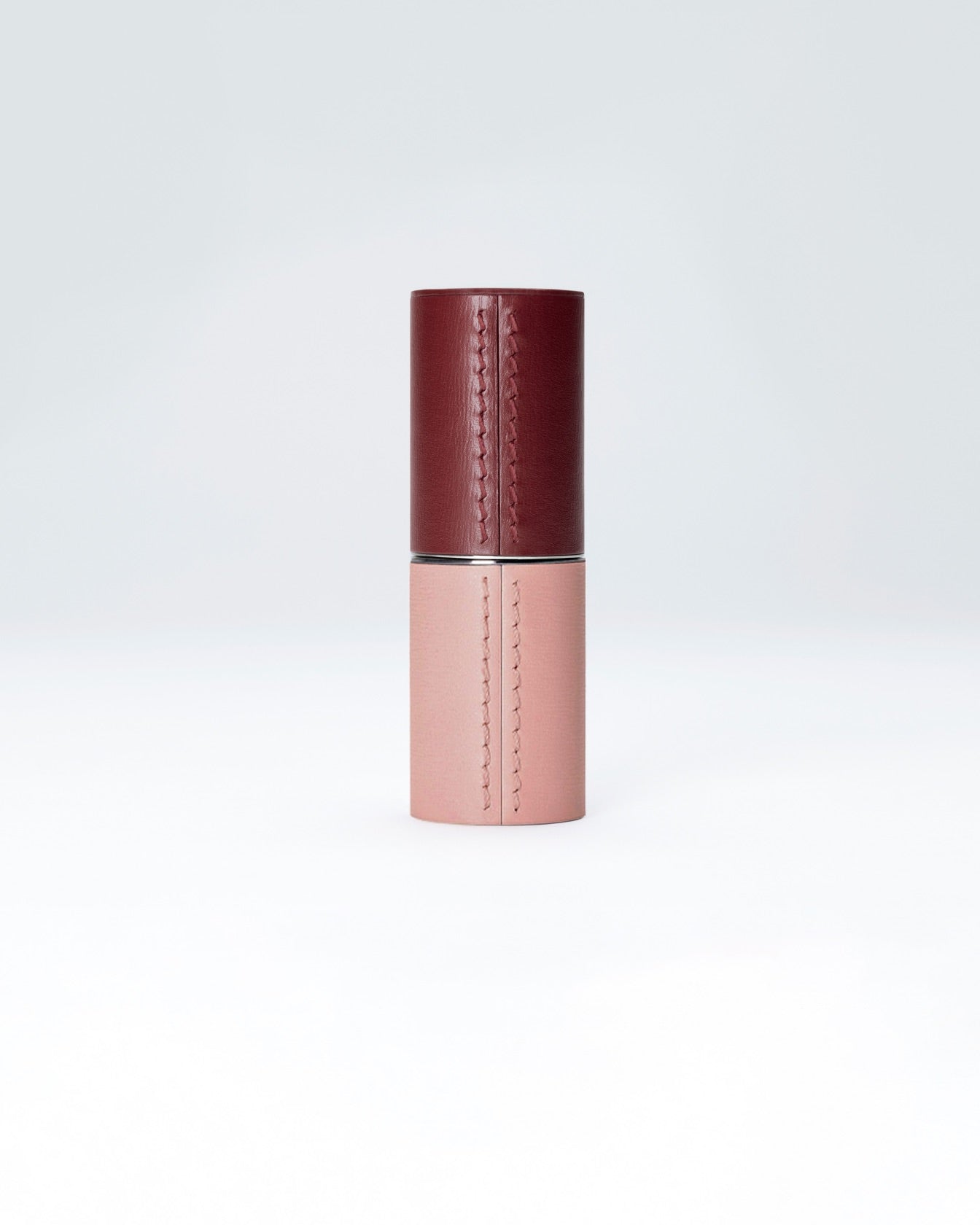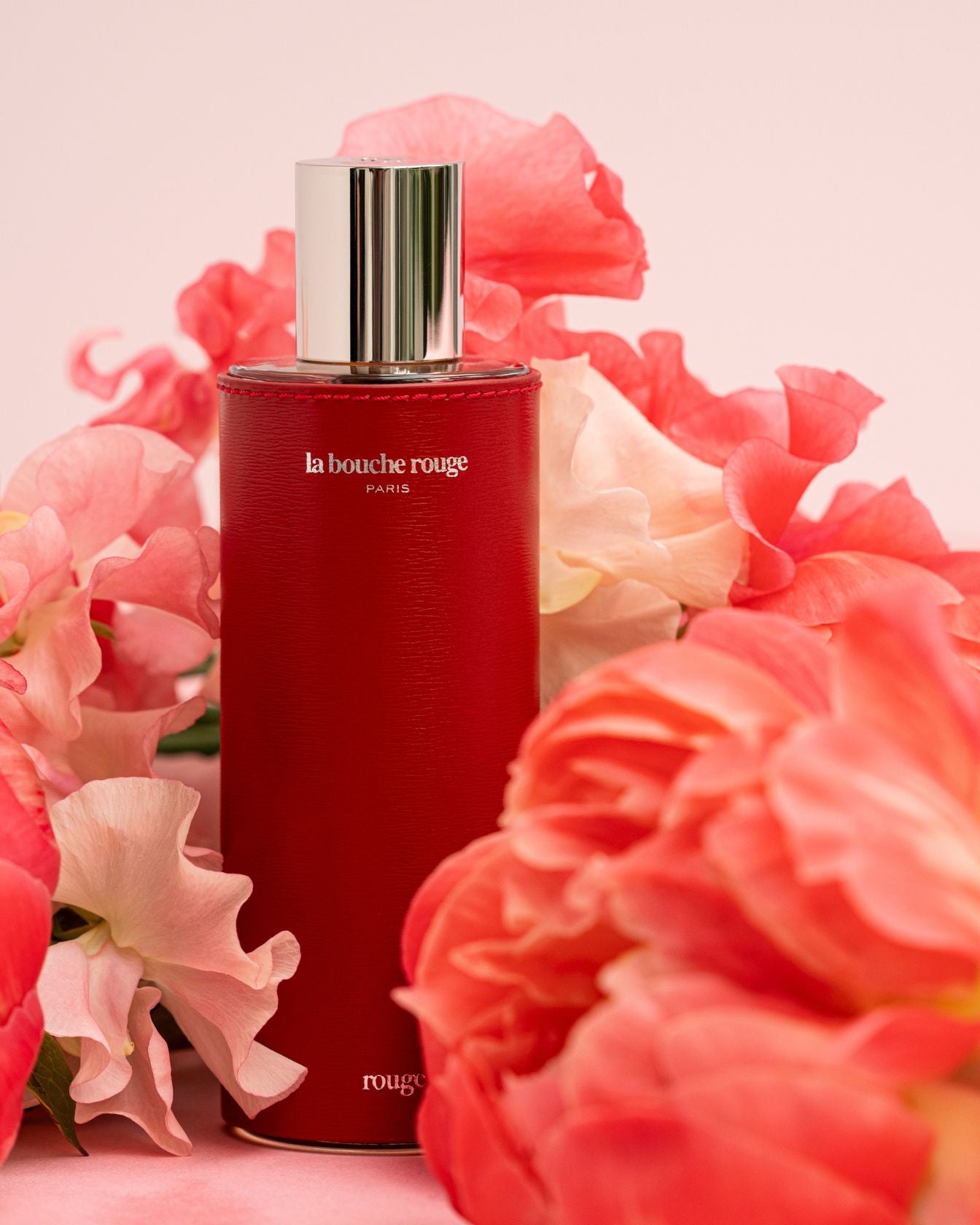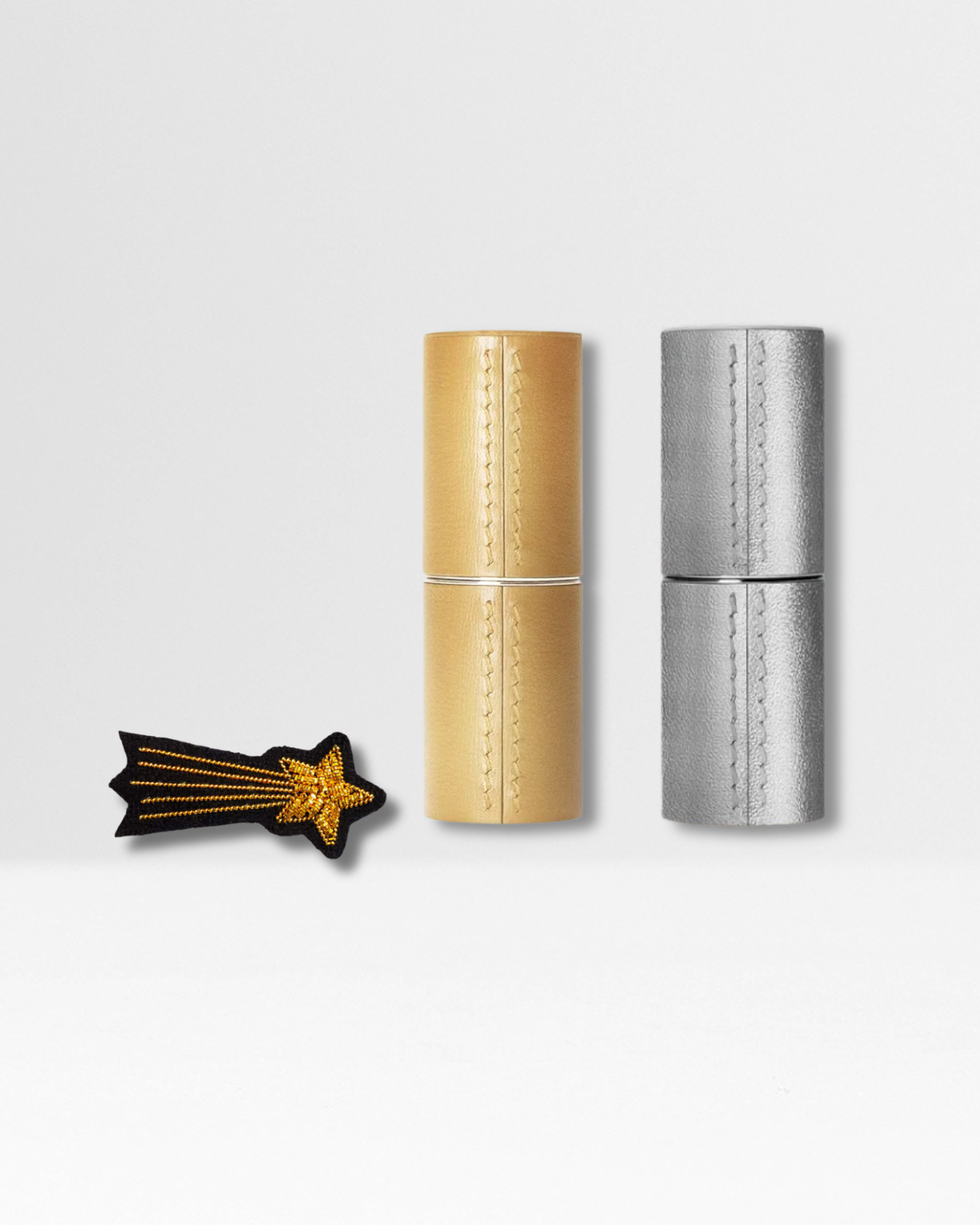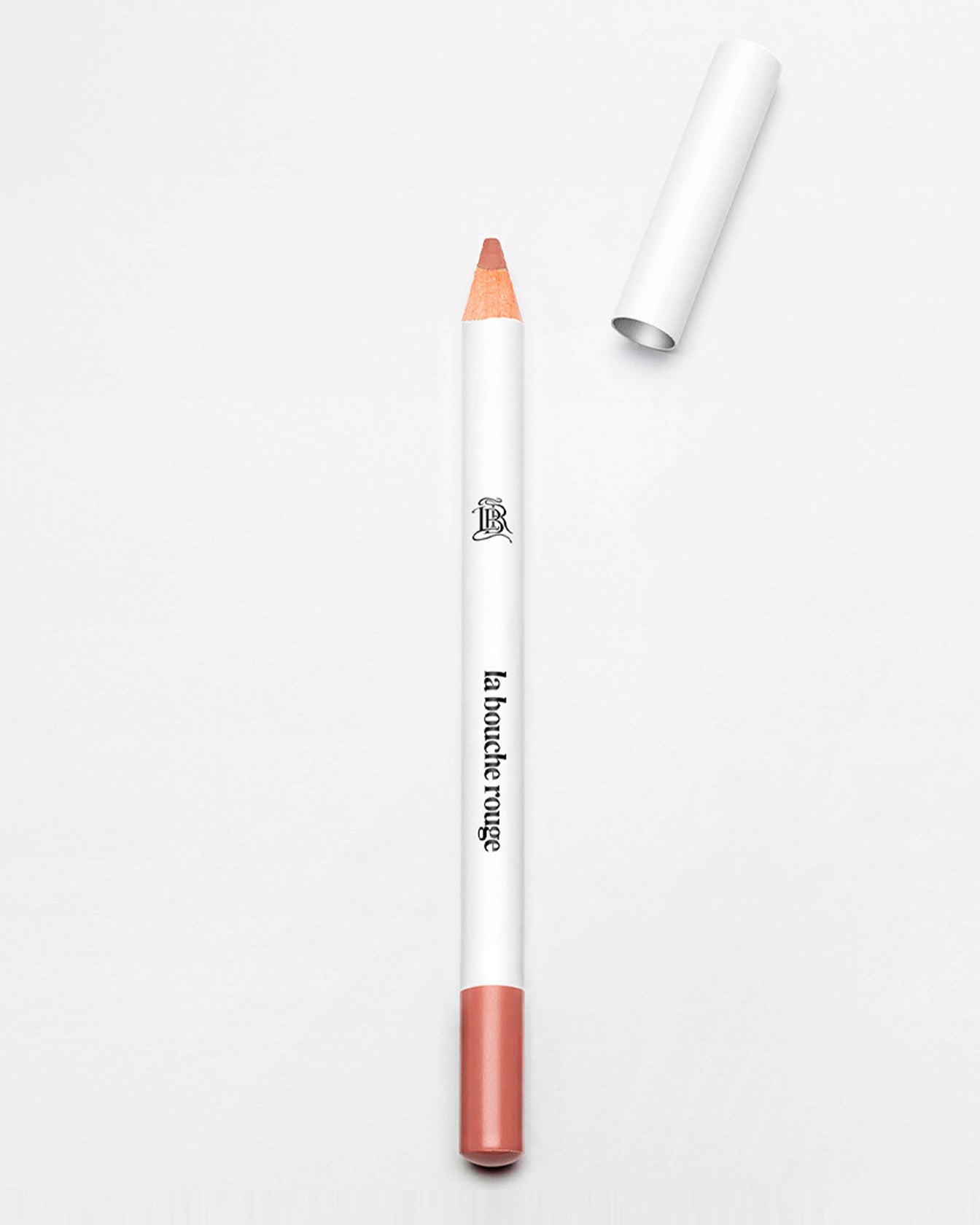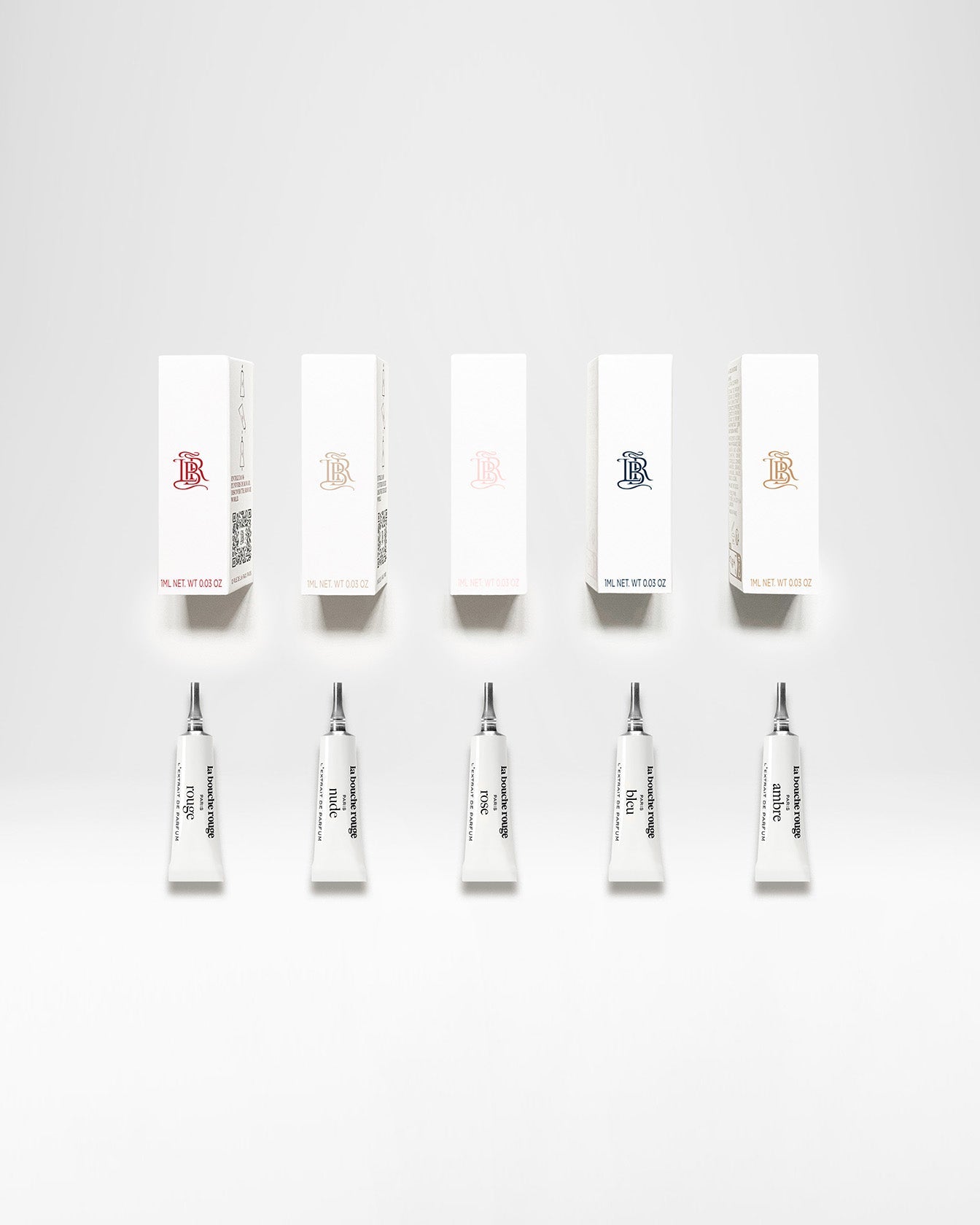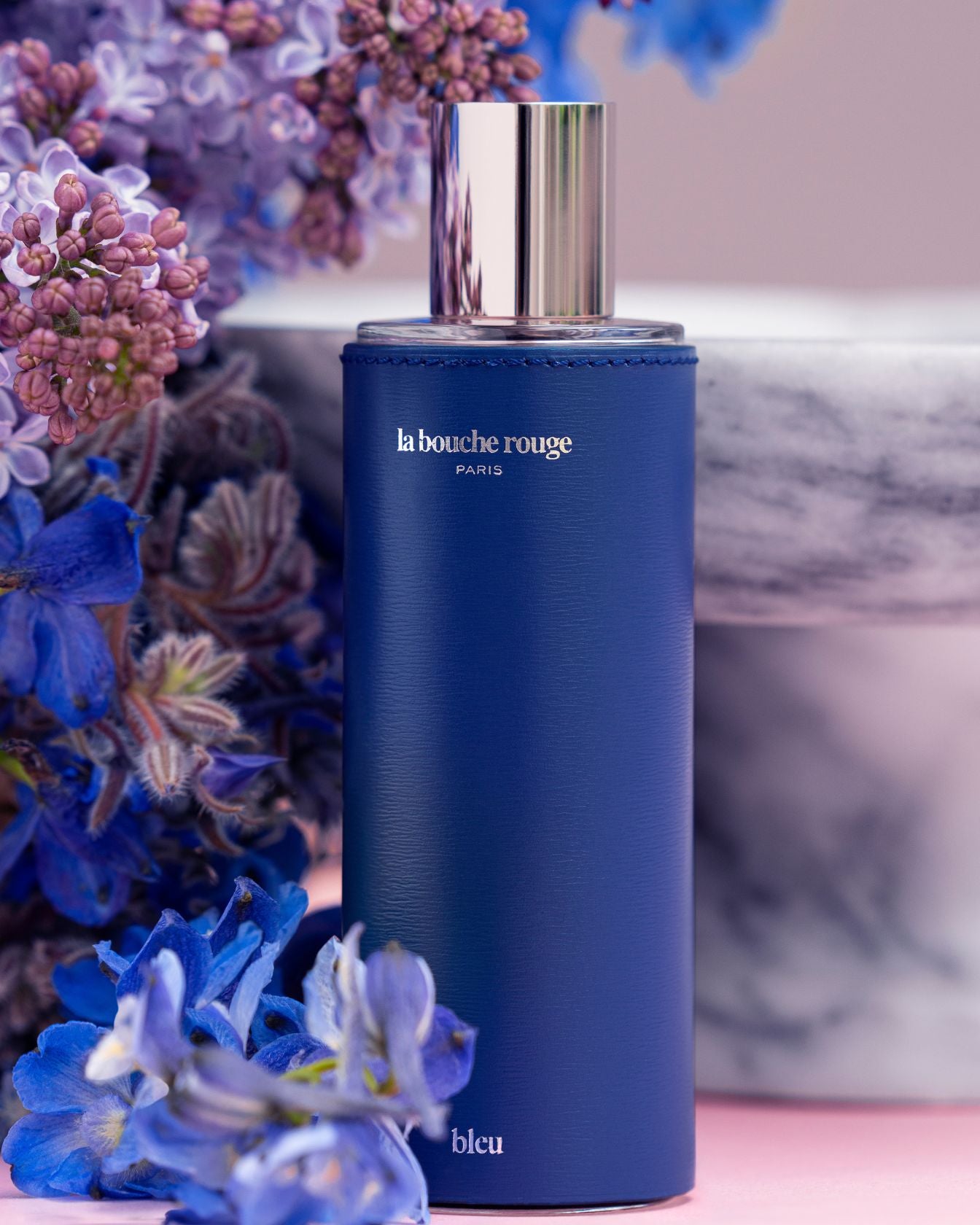Olfactory Guide
Immerse yourself in the olfactory world of La Bouche Rouge. Discover the essential vocabulary behind our clean and upcycled fragrances, and explore the raw materials that shape the unique olfactory masterpieces in our collection.
A Guide to La Bouche Rouge Fragrances
Amber
Amber fragrances, also known as orientals, are rich, sensual, and often opulent. They derive their name from ambergris, once a prized ingredient in perfumery, and are characterized by warm, sweet notes often composed of vanilla, labdanum, resins, or benzoin. These fragrances are ideal for autumn and winter, offering an enveloping, comforting sensation. Amber scents are perfect for those who enjoy deep, sophisticated aromas, occasionally with hints of spice or balsamic undertones.
Aromatic
Aromatic fragrances feature notes of Mediterranean herbs and plants like thyme, rosemary, lavender, or basil. These compositions exude a fresh, herbaceous quality, often complemented by woody or spicy undertones. They are ideal for those seeking a natural fragrance, frequently paired with masculine or unisex accords, delivering an invigorating burst of freshness.
Benzoin
Benzoin is a resin extracted from trees native to Southeast Asia, known for its soft, enveloping scent with nuances of caramel, vanilla, and honey. In perfumery, it is often paired with vanilla and labdanum to create a warm, amber-like base, adding depth and richness to fragrances.
Bergamot
Bergamot, a hybrid citrus fruit between lemon and bitter orange, is prized for the essential oil extracted from its yellow or green peel. Most famously used to scent Earl Grey tea, its fresh, slightly bitter aroma—both lemony and tangy—is a staple in citrus and amber fragrances, adding a vibrant, energizing touch to olfactory compositions.
Woody
The woody fragrance family features dominant notes like sandalwood, cedar, patchouli, and vetiver. These scents are rich and enveloping, often evoking the essence of deep forests or mysterious atmospheres. Woody fragrances can range from dry and smoky to warmer, with creamy nuances. They are ideal for those who appreciate sophisticated scents, traditionally associated with masculinity but increasingly embraced in unisex compositions.
Cedar wood
Distilled from cedar chips, this wood is highly valued in perfumery for its dry, resinous, and subtly spicy notes. Cedarwood is often used for its ability to add depth and longevity to woody and amber fragrances, making it a key ingredient in many sophisticated scent compositions.
Guaiac wood
Native to the tropical regions of South America, guaiac wood provides a dense, slightly smoky, balsamic woody note. Its aroma is resinous and smooth, with earthy, leathery undertones, making it a prized ingredient in oriental and woody compositions.
Chypre
Chypre fragrances are characterized by their complex structure, blending fresh citrus top notes with a floral heart and a woody or musky base. The name originates from François Coty's iconic 1917 perfume "Chypre," inspired by the scents of the island of Cyprus. Typical accords include oakmoss, labdanum, and patchouli. These fragrances exude sophistication and elegance, making them ideal for those in search of a unique and distinguished olfactory signature.
Incense
Incense is an aromatic resin derived from the Boswellia tree, native to the arid regions of the Middle East and East Africa. Collected through incisions in the tree’s bark, this resin offers peppery, woody, and balsamic notes, with a distinctive smoky, resinous quality. Also known as olibanum, it is highly prized for its purity and complexity, making it a cherished ingredient in perfumery.
Fig
In perfumery, figs impart a fruity, milky note with soft, green nuances, evoking both the sweet flesh and the leaves of the fig tree. This unique scent captures a sense of Mediterranean freshness and pairs beautifully with woody or floral accords, adding depth and warmth to fragrance compositions.
Floral
The floral family is one of the most popular and feminine categories in perfumery. These fragrances are primarily composed of floral notes like rose, jasmine, tuberose, or lily of the valley. Depending on the flowers used, they can range from light and fresh to opulent and complex. Ideal for those who appreciate soft, delicate, or occasionally bold scents, floral fragrances are often associated with romance and timeless femininity.
Raspberry
Raspberry, a sweet yet tart red fruit, is frequently used in perfumery to add a vibrant, gourmand fruity note. Its scent can evoke memories of jams or desserts, and it pairs beautifully with floral or woody accords, adding depth and richness to an olfactory composition.
Fruity
Fruity fragrances are crafted with fresh, juicy, or exotic fruit notes like peach, apple, pear, raspberry, or lychee. Often lively and sparkling, they are perfect for summer or bright, sunny days. These scents bring a touch of lightness and gourmandise, making them ideal for those who enjoy vibrant, youthful fragrances full of vitality.
Geranium Bourbon
Native to Reunion Island, Geranium Bourbon is known for its green, floral, and slightly mentholated notes. Its aromatic profile is reminiscent of rose, making it a perfect complement to complex floral accords, adding depth and a fresh, sophisticated touch to fragrance compositions.
Ginger
In perfumery, ginger is a hot, pungent spice that imparts a vibrant, effervescent quality. Its slightly lemony, spicy nuances bring an energetic, exotic touch, making it a versatile ingredient in both fresh and oriental compositions.
Redcurrant
This zesty little red fruit adds a fresh, sparkling note to perfumery. Redcurrant evokes sweet, juicy sensations with a touch of acidity, making it ideal for light and fruity fragrance creations.
Iris
Iris, prized for its roots, is one of the most noble ingredients in perfumery. It imparts powdery, elegant, and slightly earthy notes with a subtle woody base. Revered for its refinement, iris adds a touch of sophistication and structure to any fragrance composition.
Lavender
Lavender is a timeless classic in perfumery, known for its aromatic, floral, and slightly herbaceous notes. Used for centuries for its calming properties, lavender often pairs beautifully with woody, amber, or aromatic accords, adding a soothing and refined touch to fragrance compositions.
Lychee
Lychee, an exotic fruit with juicy, sweet flesh, brings a fruity, floral note to perfumery, complemented by a tangy, watery freshness. It is often used to add brightness and vitality to floral or fruity compositions, enhancing their freshness and lightness.
Musk
A sensual and enveloping olfactory note, now synthetic, musk adds warmth and depth to fragrances. Used as a base note, it extends the longevity and introduces soft, powdery nuances to perfumes.
Patchouli
Patchouli is a tropical plant whose dried and distilled leaves yield a rich, woody, and earthy essence with subtle camphoraceous and chocolate nuances. Widely used in oriental and chypre fragrances, patchouli adds depth and sensuality, giving compositions a warm, grounded character.
Pink pepper
Pink pepper comes from the berry of the Schinus molle, a plant native to South America and part of the Anacardiaceae family. Though not a true pepper, its berries—known as pink peppercorns—are prized for their spicy, sweet, and subtly fruity aromas. In perfumery, pink pepper is often used to add a vibrant, lively touch to floral or woody accords, enhancing their complexity and warmth.
Powdery
Powdery fragrances evoke a soft, enveloping sensation, reminiscent of the comforting scent of talcum powder or cosmetics. Typically featuring notes of iris, musk, or vanilla, these fragrances offer a delicate, airy texture. Powdery scents often conjure memories of childhood or feminine elegance, making them ideal for those seeking a subtle, refined sophistication.
Centifolia Rose
The rose, a timeless symbol of perfumery, varies in scent according to the terroir in which it grows, influencing its fragrance to be more fruity, spicy or lemony. Rose Centifolia, also known as Rose de Mai, is particularly well grown in the Grasse region of France. It is renowned for its numerous, tightly packed petals, giving it a dense, lush appearance. Its fragrance is sweet, fresh and slightly honeyed, with fruity and floral nuances. Used in elegant floral compositions, Rose Centifolia is often chosen for its refined olfactory qualities and its link with the tradition of French perfumery.
Saffron
Saffron, extracted from the stigmas of the crocus flower (Crocus sativus), is one of the world’s most precious spices, valued both in cuisine and in perfumery. In fragrances, saffron is prized for its rich, exotic, and slightly bitter note. Its aroma is spicy, warm, and dry, with metallic, leathery, and occasionally floral nuances. Often used in oriental and amber compositions, saffron adds a sensual, sophisticated depth, harmonizing beautifully with woody, resinous, or vanilla notes.
Vanilla
Derived from the pods of the Vanilla planifolia plant, vanilla is one of the most beloved ingredients in perfumery. It imparts a rich, creamy sweetness with subtle woody and spicy undertones. Often paired with amber or gourmand notes, vanilla helps create warm, comforting fragrance bases, adding depth and indulgence.
Green
Green fragrances are fresh, vegetal, and often herbaceous, evoking the crisp scents of nature, foliage, and freshly cut plants. Notes like galbanum, violet leaves, and lily of the valley add a sense of lightness and purity. These fragrances are cherished for their natural, invigorating character, making them perfect for those who enjoy refreshing and dynamic scents.
vetiver
Vetiver, a tropical plant native to India, is best known for its roots, which are highly valued in perfumery. After several years of maturation, the roots are harvested, dried, and distilled to produce an essential oil with deep, earthy notes. Vetiver’s complex olfactory profile blends woody, smoky, and occasionally damp facets with green and spicy nuances. The finest varieties hail from Haiti and Java, and vetiver is often used to create a solid, sophisticated, and long-lasting base in both masculine and feminine fragrance compositions.
